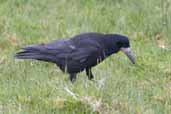
It can be distinguished from the similar Carrion Crow Corvus corone by the bare greyish-white skin round the base of the bill in the case of adults.
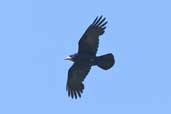
Another distinguishing feature is that Rooks are almost always in large flocks while Carrion Crows are found singly, in pairs or in small flocks. "A Rook on its own is a Crow; and a Crow in a crowd is a Rook" as my ol' Granpappy used to say.
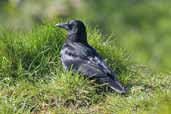
There is more information available via Avibase. The Rook is a very noisy bird especially at a rookery or breeding colony. The call is a hoarse, nasal croak.
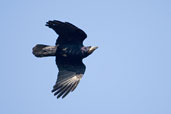
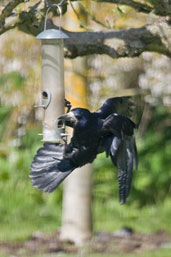
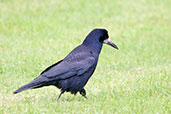
| Previous Page | Back to Index | Next Page |